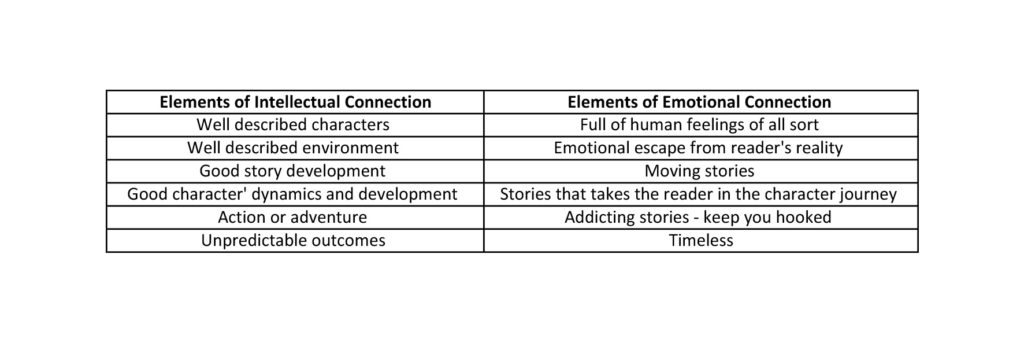Reflecting on my experience reading a popular novel, I got intrigued about the power of storytelling to promote reflection and engage people.
Recently, I read one of the most famous novels from the Canadian writer L.M. Montgomery, Anne of Green Gables. It was a delightful experience. I laughed so many times around children’s funny stories, and I need to confess that I was moved reading a narrative about the First World War written in the perspective of Canadian mothers, daughters and wives that sent their beloved to die or come back emotionally or physically hurt. I felt amazed that a novel written more than 100 years ago kept me engaged, and I am fully aware that I got emotionally connected with fictional characters.
So, moved by curiosity, I decided to apply the design thinking technique of concept development to analyze the readers’ reviews of 3 popular books and distill the key elements of storytelling that engage readers from different generations around the same stories.
My goal with this exercise was to figure out how to improve my communication skills in non-fictional environments using storytelling key elements present in fictional stories.
The design thinking exercise was not so large, but it was insightful. See below the books selected for the exercise.
• Anne of Green Gables – Complete Collection – L.M. Montgomery
• Harry Potter and the Sorcerer’s Stone – J.K. Rowling
• Murder on the Orient Express – Agatha Christie
In the application of the concept development technique, in the first step, I collected the readers’ reviews to be a source of inputs.
In step two, the collected information needs to be labeled in different categories to begin a reflection on the relevant inputs. For this exercise, I labeled the reviews in 10 categories closely related to the main subject of the reviews. The labels were: emotional appealing, life-changing, character appealing, environment appealing, engaging and addicting, enjoyable, the reader feel part of the story, timeless and for all ages, surprising and intellectual appealing.
In step three, the redundancies were eliminated, and the readers’ reviews were clustered in two major groups: elements of intellectual connection and elements of emotional connection. From these two clusters, few insights were summarized:

The best stories seem to connect the readers intellectually and emotionally. If a story captures the readers just by the intellectual, or the emotional elements, the readers don’t feel fully engaged with the story and lose interest easily.
Good stories have well-described characters that are emotionally relatable because the characters experience the same human feelings of excitement, hope, sorrow, loss and joy.
The identification between characters and readers by similar feelings, allows the readers to play a role in the story being silent additional characters.
Additionally, it is interesting to note that well-described fictional environments look so realistic that readers can imagine being in the fictional world as a way to escape momentarily from their real world.
Reflecting on the narratives that we develop at work, especially the ones that should tell the story of change, we usually focus exclusively on creating an intellectual connection with the audience. We assume that at work, people are focused on analytical information, and we rely on intellectual persuasion. However, as we dismiss the human elements of emotional connection, our messages turn to be right, but cold and disengaging, and as a result, we usually lose the connection with the people that we would like to engage.
The main lesson of this exercise to me is that in order to create impact and engage people with a message, it is not necessary to be a talented writer, but it is crucial to create engaging stories and narratives being careful to include always the intellectual and emotional elements that guarantee strong connection with the audience, to promote reflection and compel people to action.
Liedtka, J., Ogilvie, T., Brozenske, R.. (2019) The Designing for Growth Field Book a step-by-step project guide. Columbia University Press. (c). ISBN 978-0-2311-8789-3.
Photo credit: marcoverch on Visual Hunt

Storytelling is the basic principle of human existence. Without finding some ways of expressing ourselves, regardless if it is with symbols in a wall or with common words, we could not move forward with human goals.
Storytelling can indeed engage people. As a RPG (Role Playing Game) player, I witnessed good stories causing all sorts of emotions. So why not apply this to become a better leader? So why not apply that to become a leader?
I genuinely believe that this is an outstanding tool that could help teams to move forward and go beyond expectations.
This clever topic gave me a good insight for further steps.